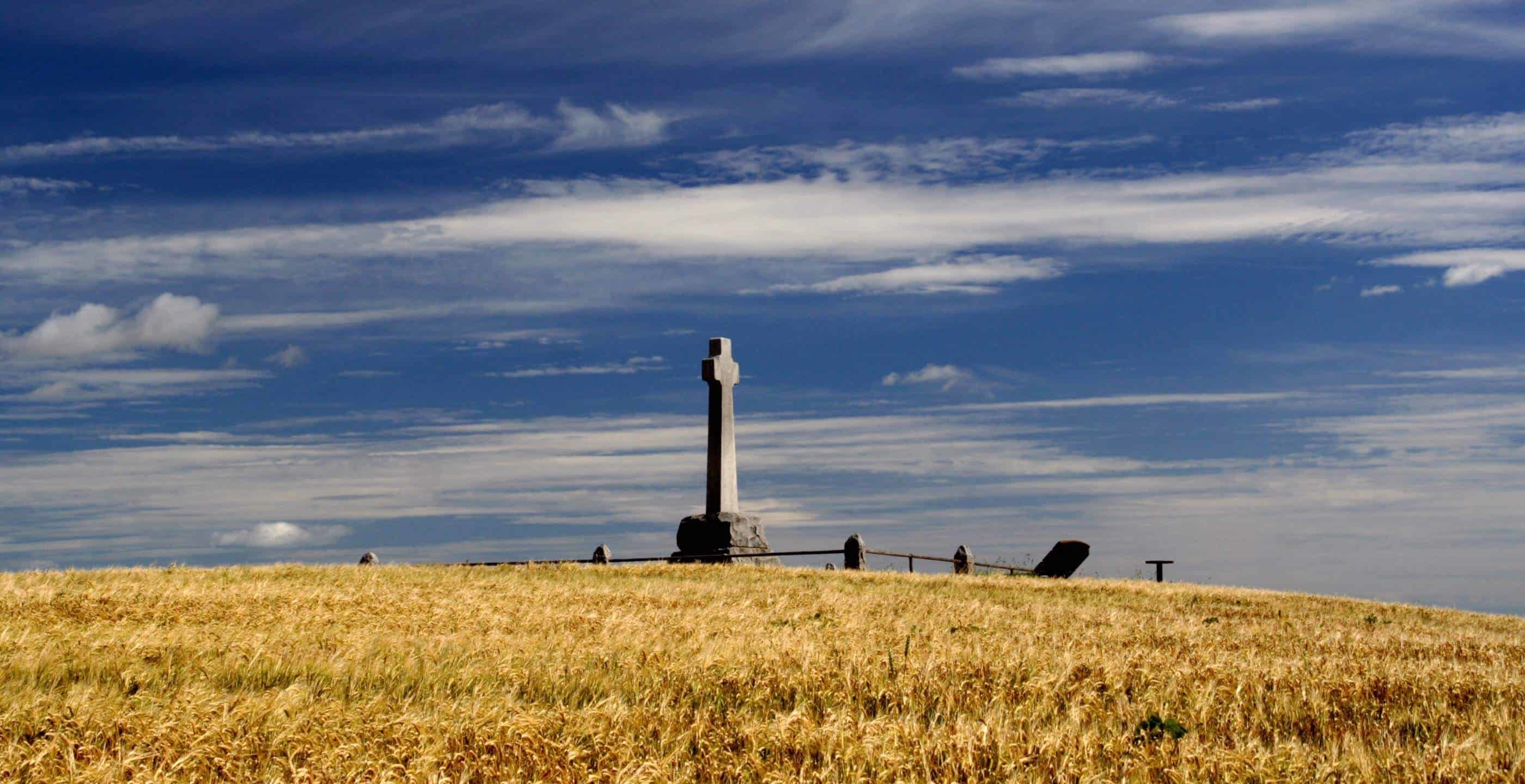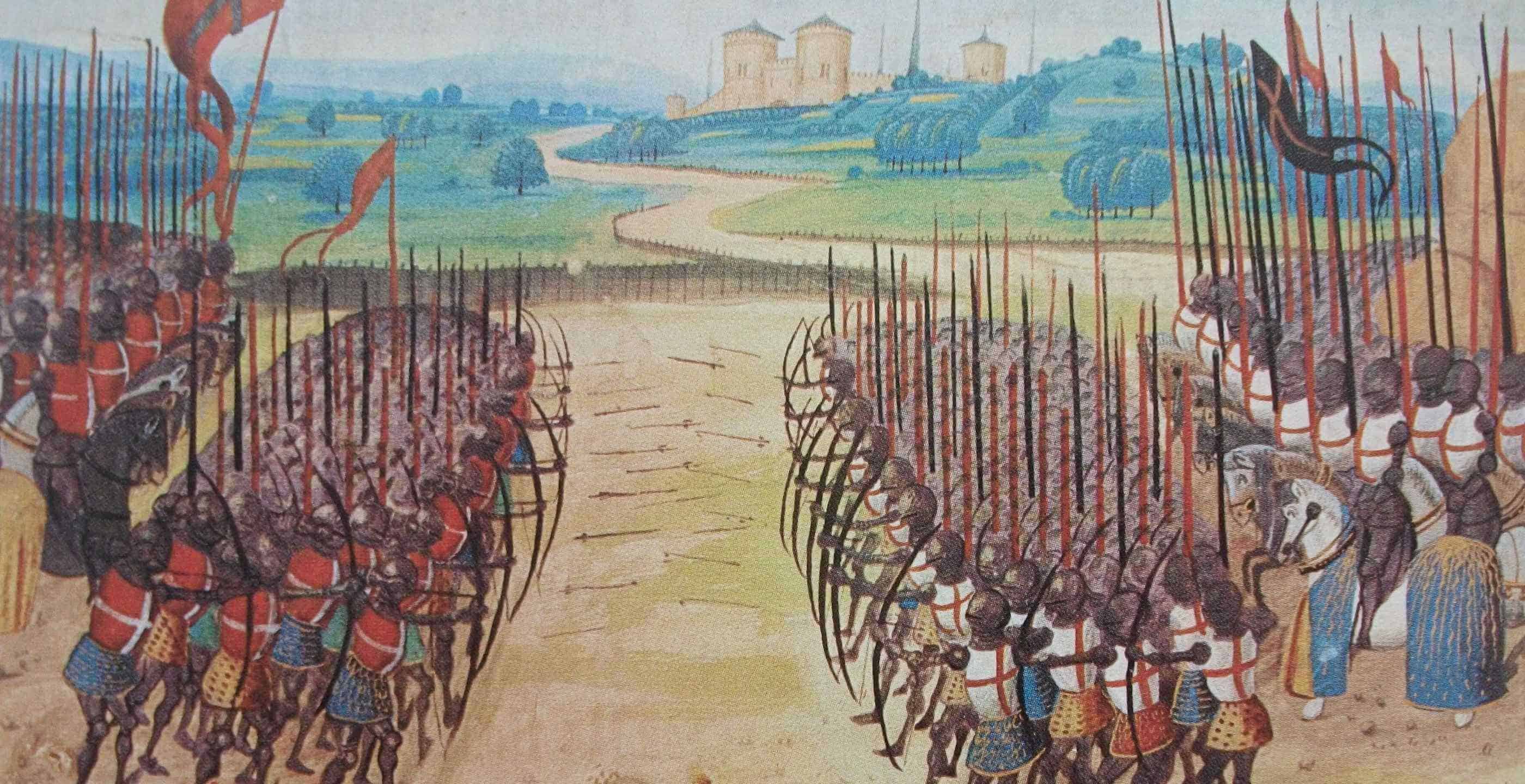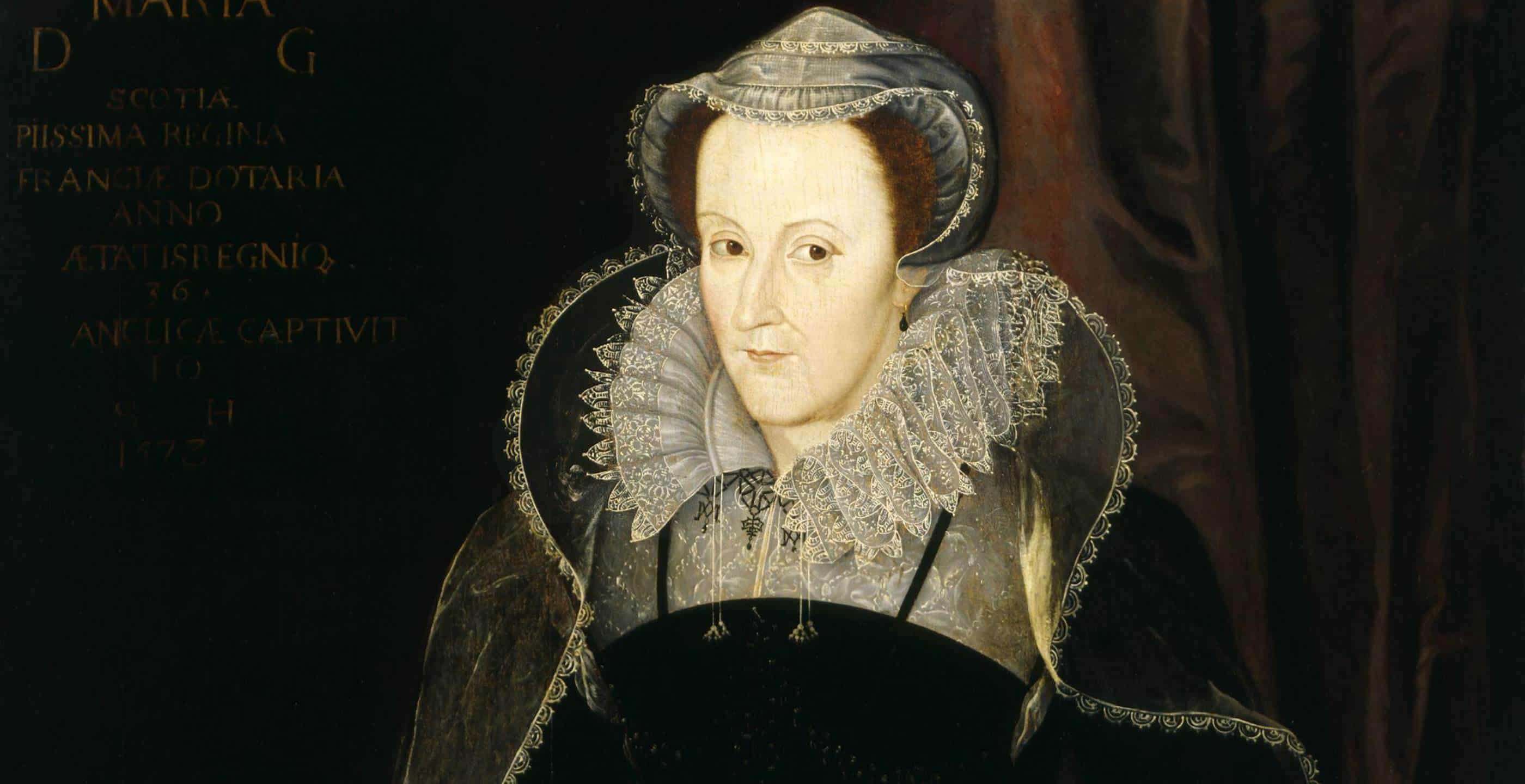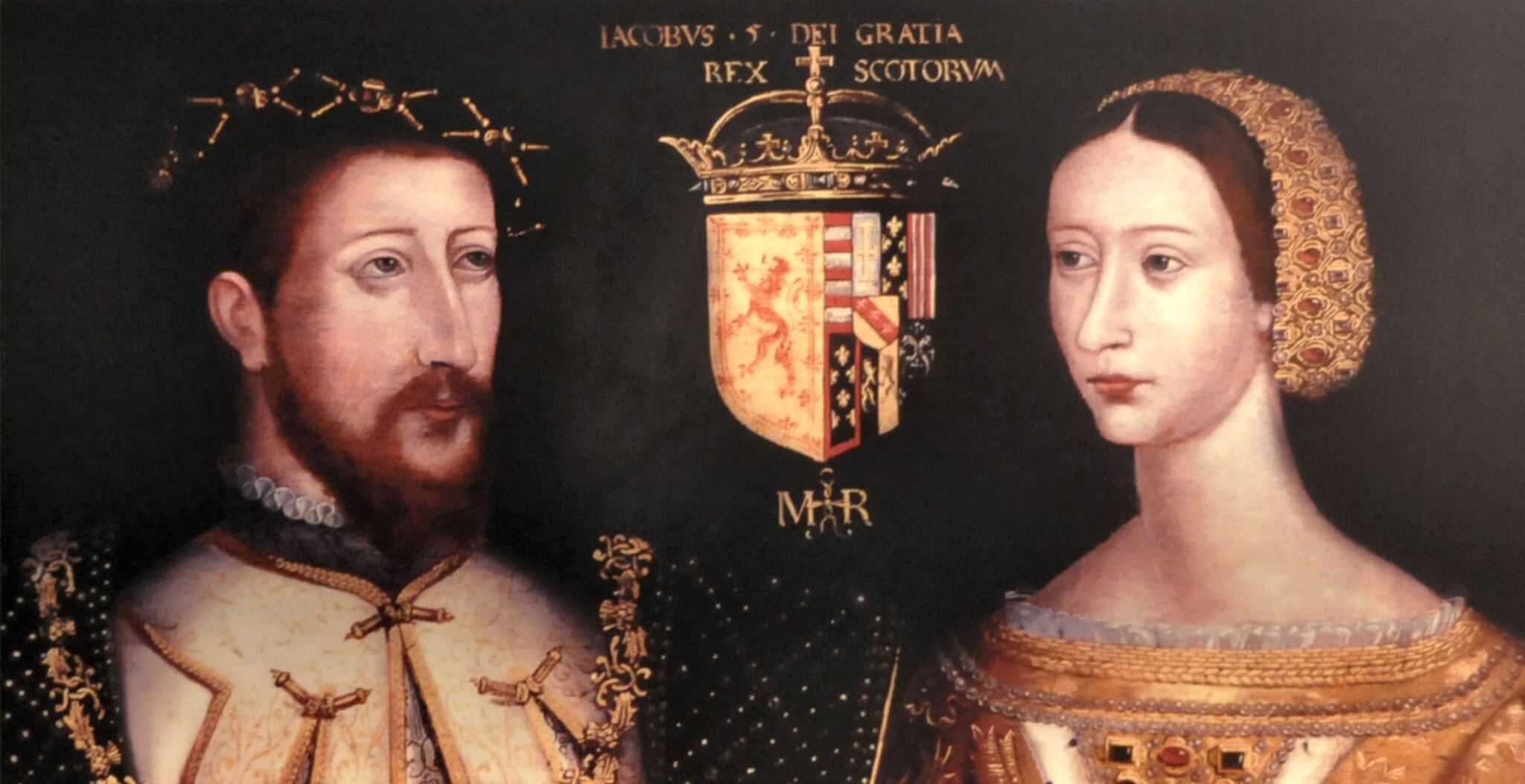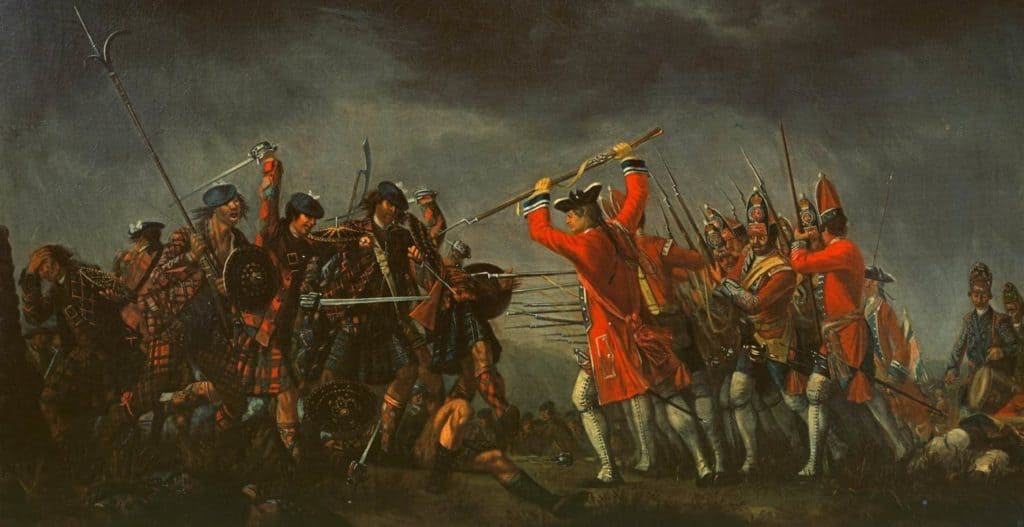In September 1513, the largest battle (in number of troops) between England and Scotland took place. The battle took place in Northumberland, just outside the village of Branxton hence the alternative name for the battle, the Battle of Branxton. Prior to the battle, the Scots were based at Flodden Edge, which is how the battle became known as the Battle of Flodden.
“I’ve heard the lilting, at the yowe-milking,
Lassies a-lilting before dawn o’ day;
But now they are moaning on ilka green loaning;
The Flowers of the Forest are a’ wede away”.
Dool and wae for the order sent oor lads tae the Border!
The English for ance, by guile wan the day,
The Flooers o’ the Forest, that fought aye the foremost,
The pride o’ oor land lie cauld in the clay.
I’ve heard the lilting, at the yowe-milking,
Lassies a-lilting before dawn o’ day;
But now they are moaning on ilka green loaning;
The Flowers of the Forest are a’ wede away”
— Extract from “The Flowers of the Forest”, Jean Elliot, 1756
The Battle of Flodden was essentially a retaliation for King Henry VIII‘s invasion of France in May 1513. The invasion provoked the French King Louis XII to invoke the terms of the Auld Alliance, a defensive alliance between France and Scotland to deter England from invading either country, with a treaty that stipulated that if either country was invaded by England the other country would invade England in retaliation.
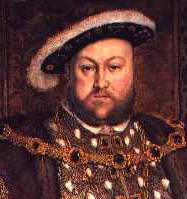

King Henry VIII of England (left) and King James IV of Scotland
The French King sent arms, experienced captains and money to help with the counter attack of England. In August 1513, after King Henry VIII rejected King James IV of Scotland’s ultimatum to either withdraw from France or Scotland would invade England, an estimated 60,000 Scottish troops crossed the River Tweed into England.
Henry VIII had anticipated the French using the Auld Alliance to encourage the Scottish to invade England and therefore had only drawn troops from the south of England and the Midlands to invade France. This left Thomas Howard, Earl of Surrey (Lieutenant-General in the North) to command the English against the invasion from north of the border. The Earl of Surrey was a veteran of Barnet and Bosworth. His experience became invaluable as this 70 year-old man began to head north assimilating large contingents from the Northern Counties as he headed to Alnwick. By the time he reached Alnwick on the 4th September 1513 he had assembled around 26,000 men.
The Earl of Surrey heard news that King James of Scotland planned to position his army at Flodden Edge on the 7th September 1513. Flodden Edge is an impressive feature rising up to a height of between 500-600 feet. On hearing the news of the Scots position, Surrey appealed to King James to fight on more level ground. But Surreys appeal fell on deaf ears and King James refused.
The day before battle, Surrey began marching his army north so that by the morning of the battle on the 9th September 1513, the English were in a position to start approaching the Scots from the north. This meant that King James’ lines of retreat across the River Tweed at Coldstream would be cut off if he remained at Flodden Edge, forcing him to march the Scots a mile from Flodden Edge to Branxton Hill, a less daunting but still uneven vantage point.
The outcome of The Battle of Flodden was mainly due to the choice of weapons used. The Scots had advanced in the continental style of the time. This meant a series of massed pike formations. The Scottish armies’ great advantage of using high ground became its downfall as the hilly terrain and ground became slippery underfoot, slowing down the advances and attacks. Unfortunately, the pike is most effective in battles of movement which The Battle of Flodden was not.

The English chose a more familiar weapon, the bill (shown on the right). This favoured the terrain and the flow of the battle, proving to have the stopping power of a spear and the power of an axe.
Surreys style of using the medieval favourites of the bill and bow against the more Renaissance style of the Scottish with their French pikes proved superior and Flodden became known as the victory of bill over pike!
The English Army led by the Earl of Surrey lost around 1,500 men at the Battle of Flodden but had no real lasting effect on English history. The 70-year old Earl of Surrey gained his fathers title of Duke of Norfolk and went on to live on into his 80’s!
The repercussions of the Battle of Flodden were much greater for the Scots. Most of the accounts on how many Scottish lives were lost at Flodden conflict, but it is thought to be between 10,000 to 17,000 men. This included a large proportion of the nobility and more tragically its King. King James IV of Scotland’s death meant a minor noble ascended the throne (an unfortunately familiar tale in Scottish history) causing a new era of political instability for the Scottish nation.
The Scottish still remember the Battle of Flodden today with the haunting ballad and pipe tune “The Flowers of the Forest”. Written 300 years after Flodden, the lyrics are written to commemorate the fallen Scots.
Click here for a battlefield map.
Flodden Memorial. Image licensed under the Creative Commons Attribution-Share Alike 2.0 Generic license. Author: Stephen McKay.
